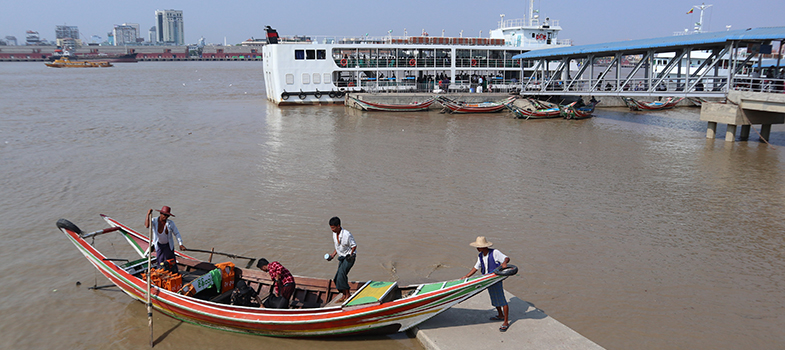3.6.1 Chemical pollution
Chemical water pollution is the discharge or introduction of chemicals such as pesticides, herbicides and other naturally occurring substances such as fluorine into water bodies, causing adverse effects both to the environmental and on human health. Toxins in industrial waste are the major cause of immune suppression, reproductive failure and acute poisoning in humans. Insecticides like DDT concentration is increasing along the food chain. These insecticides are harmful for humans.
Contamination can occur at many points in the global water cycle. Most familiarly, pollutants can be released into rivers or into the sea, but they can also be released into groundwater by pollution of the soil. Some pollutants enter the water cycle from the atmosphere such as acid rain. However, arsenic and other naturally occurring inorganic toxic substances present in groundwater in Myanmar have been linked to a variety of chronic diseases, including cancer, heart disease, and neurological problems. The southern and central regions’ groundwater is highly contaminated with arsenic (Bacquart, 2015).
When chemical contaminants enter the body of a person, they circulate in the blood. Different contaminants have different chemical properties and specific contaminants tend to accumulate in specific parts of the body, called target tissues, or in substances produced in the body such as breast milk. The study of the effects of toxic chemicals on biological organisms is called ecotoxicology. The affinity of specific pollutants for specific target tissues is related to a very important aspect of ecotoxicology, called bioaccumulation.
Bioaccumulation
Bioaccumulation is the gradual accumulation of substances, such as pesticides or other chemicals, in an organism. Bioaccumulation occurs when an organism absorbs a substance at a rate faster than that at which the body can dispose of the substance through excretion for example, leading it to build up in the body.
The following table shows where some common pollutants build up in the human body.
| Pollutant | Target tissues or substances |
|---|---|
lead
| bone, teeth, nervous tissue
|
mercury
| nervous tissue, particularly the brain
|
organochlorine pesticides, polychlorinated biphenyls (PCBs)
| fatty tissue, breast milk
|
asbestos | lungs
|
Such contaminants then endanger the health of water users, particularly the organisms that live in the body of water. The impacts on the wider ecosystem can multiply through food chain and food webs.
3.6 Effects of water pollution
